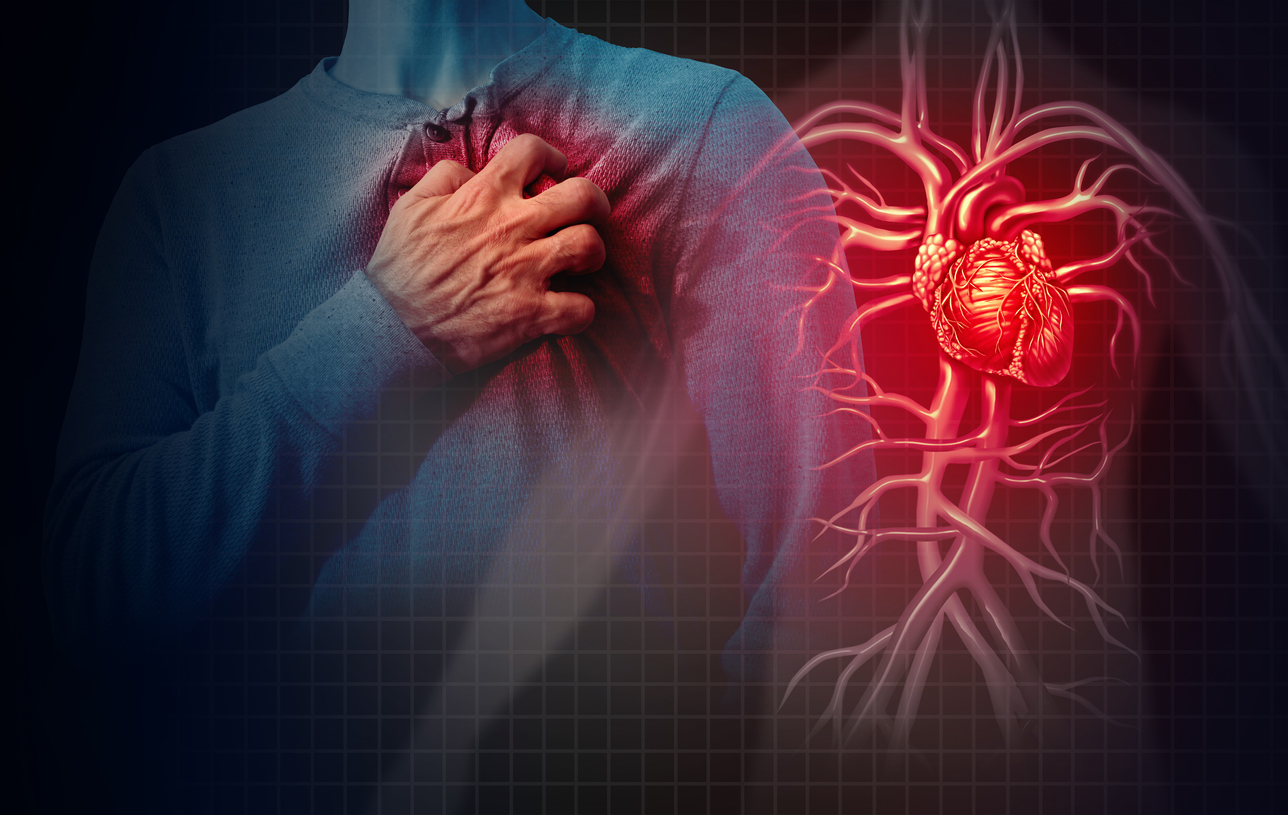Mounting scientific evidence over decades has established that atherosclerosis is a chronic inflammatory disorder involved in cardiovascular disease. Although a variety of inflammatory markers (ie, C-reactive protein) have been associated with atherosclerosis and its consequences, it is important to identify principal mediators of the inflammatory responses. Among the potentially critical sources of vascular inflammation during atherosclerosis are the components of pathogenic bacteria, especially lipopolysaccharide (LPS).
One potentially important source of inflammation is endotoxin (lipopolysaccharide [LPS]).
**An endotoxin is a toxic substance bound to the bacterial cell wall and released when the bacterium ruptures or disintegrates.
What is Lipopolysaccharide (LPS)
Lipopolysaccharide (LPS) is a molecule made up of a lipid and a polysaccharide. LPS is a component of the surface membrane of gram-negative bacteria found in the gastrointestinal tract. Gram-negative bacteria include: Escherichia coli, Salmonella, Shigella, Pseudomonus, Helicobactor, Legionella, Wolbachia.
As an endotoxin, LPS increases the negative charge of the bacterial membrane and promotes the upregulation of pro-inflammatory cytokines eliciting a strong immune response
The detection of antibodies against LPS indicates infiltration of macromolecule-sized endotoxins into the intestinal barrier and the systemic circulation which is known to contribute to atherosclerosis.
LPS and Leaky Gut
LPS is one marker among seven markers for increased intestinal permeability aka: Leaky Gut.
The additional markers include Zonulin, Anti-Zonulin IgG, Anti-Zonulin IgA, Anti-Actin IgG, Anti-Actin IgA, Anti-LPS IgA and Anti-LPS (IgG + IgM)
Epidemiological investigations have proposed that LPS confers a risk factor for the development of atherosclerosis

Accumulating data support the premise that an LPS-derived inflammatory setting should be considered a risk factor for the initiation, or exacerbation, of atherosclerosis
Bacterial endotoxin is a potential source of vascular inflammation and may be an important risk factor for atherosclerosis.
Numerous studies clearly demonstrated that elevated serum LPS levels were associated with the development of atherosclerosis.
Recommended Labs to Order the LPS Testing
https://www.vibrant-wellness.com/test/WheatZoomer
https://www.cyrexlabs.com/
Array 2 – Intestinal Antigenic Permeability Screen
https://kbmodiagnostics.com/
Gut Barrier Panel
https://kbmodiagnostics.com/gut-barrier-panel/
Treatment Strategy to Eradicate and Minimize the Expression of LPS on Cardiovascular Health
The science of functional medicine it has been well established that the following protocol incorporating a program using a simple acronym of the 6Rs: remove, replace, reinoculate, repair, rebalance and re-test has been significantly effective in eradicating the LPS.
When applied to various health conditions including atherosclerosis the 6R program can lead to a dramatic
improvement in symptoms and sometimes even complete resolution.
The elements of the 6R program are described briefly here.
1: Remove
Remove stressors. Get rid of things that negatively affect your GI tract, including foods (in some cases, gluten) you are sensitive to, parasites, and potential problematic bacteria or yeast. This might involve using an elimination diet to find out what foods are triggering GI symptoms. It may also involve taking medications or herbs to get rid of an infection.
2: Replace
Replace digestive enzymes. Add back things like digestive enzymes, bile acids, and hydrochloric acid that are required for proper digestion and that may be compromised by diet, medications, diseases, aging, or other factors.
3: Reinoculate
Aid beneficial bacteria flourish by eating probiotic-rich foods or taking supplements that contain “good” bacteria, such as Bifidobacteria and Lactobacillus species, and by eating high-fiber foods that supply prebiotics to nourish good microbes.
Include a rich supply of prebiotics are foods. These foods will stimulate the growth of beneficial microorganisms already in the large intestine. Prebiotics are available in many foods that contain a fiber called inulin, including artichokes, garlic, leeks, onions, chicory, tofu, and other soy products. Grains and seeds such as barley, oats flaxseeds, and chia seeds are also good sources of prebiotics. Another prebiotic source is a supplement ingredient called fructooligosaccharides (FOS).
4: Repair
Help the lining of the GI tract repair itself by supplying key nutrients that heal a compromised gut, such as zinc, antioxidants (such as vitamins A, C, and E), omega-3 fish oils, and the amino acid glutamine.
5: Rebalance
It is important to pay attention to lifestyle choices. Sleep, exercise, and stress can all affect the GI tract. Managing and balancing those factors helps promote optimal digestive tract health.
6: Re-test
Once one applies the therapeutic principles of effective treatment, re-testing is highly recommended to determine if the LPS is no longer present in the systemic circulation.
Dr. Grisanti’s Comments:
The above graphic represents an actual patient with atherosclerosis. As noted above you see that the LPS markers were elevated. This specific patient had a number of other cardiovascular markers compromising their cardiovascular health. The 6 Rs were carefully applied and followed by the patient.
I also recommended the following products to aid in specifically decreasing the LPS:
Megaspore from Microbiome Labs-
MegaSporeBiotic™ is a 100% spore-based, broad-spectrum probiotic shown to maintain healthy gut barrier function. This unique all-spore formula effectively RECONDITIONS the gut by promoting microbial diversity and maintaining key health-promoting, commensal gut bacteria.
Metabolic Daily from Pendulum
Mega IgG2000 from Microbiome
Mega IgG2000 is a dairy-free immunoglobulin concentrate that supports healthy digestion and maintains healthy gut barrier function. Unlike other milk-derived immunoglobulins on the market, Mega IgG2000 is derived from bovine serum, making it lactose-free, casein-free, and β-lactoglobulin-free.
References:
https://www.sciencedirect.com/science/article/abs/pii/S1050173821000992
https://www.nature.com/articles/s41569-022-00737-2
https://link.springer.com/article/10.1007/s12265-021-10109-9
https://www.ahajournals.org/doi/10.1161/JAHA.119.013628
https://lipidworld.biomedcentral.com/articles/10.1186/1476-511X-11-139
https://www.ahajournals.org/doi/full/10.1161/01.ATV.0000147534.69062.dc
https://www.ncbi.nlm.nih.gov/pmc/articles/PMC5669181/
Credit: Ronald Grisanti, DC,
Compliments from Functional Medicine University
For more articles on Functional Medicine and strategies for living a healthier life, click here.



